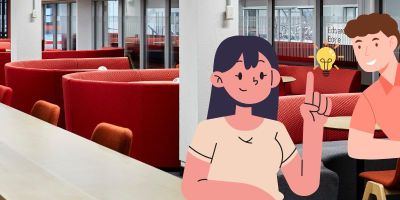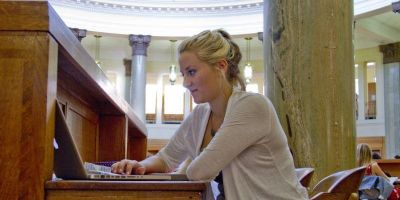Opening our rare cultural collections to the world
Opening up our University Libraries’ cultural collections will encourage new discoveries, which is central to our vision: Knowledge for All.
Imagine someone tens of thousands of miles away, on the other side of the planet, being able to see our rare and unique cultural collections – at a click of a button within seconds.
In this digital age, you’d think this was relatively easy but unfortunately, it’s not that straightforward. An investment of £4.4m is required to create a digital library infrastructure for the future. If we get this right, the potential is tremendously exciting – in stepping up into a world where we can offer research ready collections to accelerate challenge-based research and innovation.
It will transform the interactions students have during teaching and assessment – and our community will have much greater opportunity to see our unique collections. We will create a new portal for discovery.
Increasingly collections are born-digital, digitised, or a mixture of both. Whilst this provides new opportunities for interacting with the collections, it also poses significant challenges. The Digital Library Infrastructure Project (DLIP) aims to address these challenges, whilst also opening our collections to new users and facilitate new opportunities.
"Research ready" collections will enhance challenge-based research and innovation; enhanced student interactions during teaching and assessment; and community engagement with the libraries’ unique collections. Staff and students will be able to interact with the libraries’ collections in new ways as well as ensuring their preservation for future generations.
Digital Creativity
The research-ready aspect of our collections is critical, especially as technology around us is advancing rapidly in Machine Learning, Artificial Intelligence, Natural Language Processing, Corpus Linguistics, Image Recognition, and Extended Reality.
The new Digital Creatives and Cultures Hub within the Brotherton Library will enable these technologies to be learned, shared, and showcased within the libraries by staff and students across all disciplines.
Digital Reunification
Library collections are full of stories and new discoveries, often these stories span countries. Bringing collections together digitally is much easier than physically transporting rare and unique objects. This will be possible through the adoption of open international standards, enabling ‘digital reunification’ through a simple drag and drop.
We will be able to digitally recreate the manuscript collection of the Honresfield Library, from which we recently acquired first editions of Wuthering Heights, Agnes Grey and The Tenant of Wildfell Hall, as well as two letters by Branwell Brontë.We will be able to digitally recreate the manuscript collection of the Honresfield Library, from which we recently acquired first editions of Wuthering Heights, Agnes Grey and The Tenant of Wildfell Hall, as well as two letters by Branwell Brontë.
The Honresfield Library’s manuscripts have been distributed between eight institutions, including the British Library and Bronte Parsonage. We are currently discussing a pilot reunification with partners at the University of Victoria, Vancouver, Canada who also hold correspondence from Sir Herbert Read (1893-1968), widely recognised as one of the leading advocates of modern art in 20th century Britain.
Getting closer than before
The implementation of deep zoom will provide access to the large-scale images taken by the libraries’ digitisation studio. You will be able to analyse objects in greater detail than before.
Deep zoom will show how a letter was written; annotations in the margins of manuscripts will be able to be rotated and read; brush marks seen in works of art; the penmanship of scribes in medieval manuscripts; and side by side comparisons of items in collections across many miles, or oceans.
Collection Challenges
At Leeds we are fortunate to have many modern cultural collections, however, these bring unique challenges due to the personal natural of some material. Providing secure trusted access to these digital collections to staff, students, and visitors will enable more collections to be accessible for research and teaching purposes.
The variety of objects within the collections at Leeds both physical and digital, provide great opportunities and challenges. Whilst we have many items that you expect in our stores, books, archival boxes of letters, and manuscripts, there are also coins, animation cells, film reels, cassette recordings, sketch books, floppy discs, paintings, and textiles.
Digital preservation, discovery and access to these objects by summer 2025 is our first goal.
Phase two will open the collections so you can search not only for an item but also within an object at the underlying text, images and audio.
By the start of 2027/28 the library’s platform will enable stories and exhibitions to be curated; and annotations to be added to objects to help lift them from the screen through increased interaction.
Diversification
The other major challenge for our collections is their diversification. It is vital that we diversify our collections, stay rooted in our local communities, while providing global access for maximum connectivity and impact. The primary mechanism for diversity of collections is digital. The goals of diversification and global impact are not possible without a globally accessible digital libraries infrastructure. As an additional benefit, providing global access to our collections for research and education also reduces the need to travel, supporting our sustainability goals.
User Driven
At the heart of the project is the need to allow user-driven engagement with collections, seamlessly between the physical and digital. Digital surrogates do not replace the physical item but provide opportunities for different methods of interrogation and re-use.
Engagement with the staff and student community is fundamental to the successful delivery of the project and realising the potential to integrate the libraries’ cultural collections within teaching, research and innovation.
The current Mass Digitisation Scoping Project will give us a clearer understanding of how digital collections may be used in future, making it easier to prioritise the creation and scoping of new digitised content.
“DLIP is an exciting and innovative project which will transform access to and use of Special Collections through state-of-the-art digital infrastructure. It will champion connectivity, of users and collections, and radically enhance the Leeds offer in teaching and research, establishing it as a centre of excellence with a reputation for dynamism and forward-thinking.”
Open Standards
We must preserve our collections for future generations. When libraries say they will keep it forever, they mean ‘forever’. Therefore, adopting open standards is key to removing reliance on particular vendors and adopting a sustainable approach to systems and infrastructure.
The standards we will be adopt derive from the Arts and Humanities Research Council’s (AHRC) ‘Towards a National Collection’ (TaNC) programme of investment. These include International Image Operability Framework (IIIF) to enable deep zoom and digital reunification; adoption of Persistent Identifiers (PIDs) for citation; digital preservation to ensure future generations can access born-digital and digital content. Adopting these technologies will enable Leeds to innovate on a foundation of sustainable, sharable infrastructure and practice.
Getting to this point has taken an incredible amount of effort. It’s taken us 18 months to build a successful business case for investment. At times it was daunting, however the support of the community within Leeds and engagement with our world leading cultural collections provided me with the true belief that this is the right thing to do. Thank you to everyone who has shared in this vision and put in such hard work to get the project off the ground.
More information will be shared on the libraries’ blog as the project develops.
This story also appeared on the staff news intranet.




